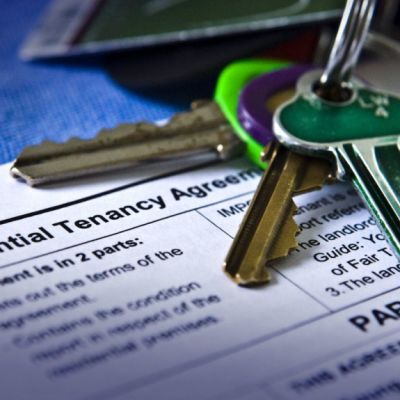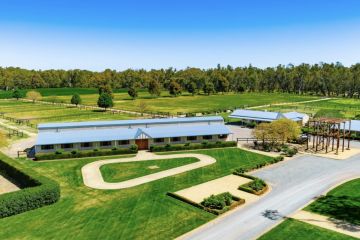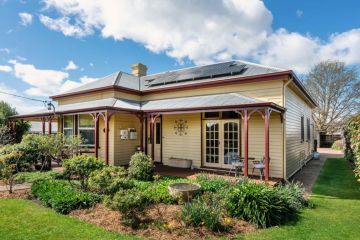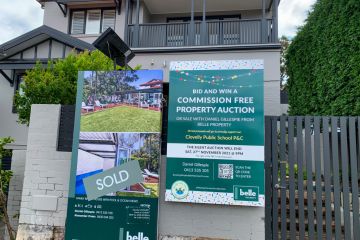Why the Victorian government can't really help first-home buyers
Governments like to be perceived as “fixers”; that they can solve problems voters face. Take, for example, the suite of promises the Andrews government has made about housing and property over the past few weeks.
With an affordability crisis looming for people trying to crack into Melbourne’s increasingly expensive property market, the Premier, the treasurer, the planning minister and the consumer affairs minister have been out in an an apparent attempt to convince Victorians they’ve got the housing situation under control.
The trouble is that they don’t — and they can’t.
The biggest factors forcing up house prices are the bigger pockets of developers, always keen to buy residential blocks to build higher density projects and the tax breaks available to those already in the property market, like negative gearing.
In order for first-home buyers to get into the market — beyond a house and land package on the urban fringe and “getting a good job” in order to afford anything within cooee of their workplace — house prices need to go down.
One of the few other options available — unpalatable for a government wanting to keep employment and the economy healthy — would be to hike taxes for property developers in order to price them out of the market.
Though the OECD has now raised the alarm for Australia, any effects of a possible investor escape from the market en masse are likely to be felt years after it eventuates (if ever).
What this really means is the state government is merely window dressing. If it was keen to help address the problem, it would lower land tax — already hurting commercial landlords — and stamp duty, a huge hurdle for first-home buyers to leap.
So, what to make of the state government’s initiatives?
- Bad news
Doubling the first-home buyers grant in regional Victoria to $20,000 for new homes
Looks great on paper but the ancillary effect is that it pushes up prices of similar, existing stock, particularly in towns like Wallan, as well as Geelong, Bendigo and Ballarat.
At the same time, prices in these bigger cities are under siege from Melbourne investors. The Bendigo council last year notably said the local housing market, particularly in new estates, was being hijacked by Melbourne-based buyers, who were driving up prices for locals. Negative gearing was one key reason.
Add that to the fact that regional Victorians have lower wages.
Another land release to create 17 new suburbs
Experts have for decades told successive governments that Melbourne needs to build up, as well as out. Yet here are more new suburbs to be dominated by cookie-cutter house and land packages far from the city.
Without the public transport and commercial investment to bring access to jobs, the continuing sprawl of the city beyond its proper boundaries will continue to lead to negative outcomes for those who can afford to only live there.
When the Andrews government was elected, Melbourne’s median house price was $627,068, Domain Group data shows. Now, it is $795,447, with consecutive quarterly rises for four years.
Hand in hand with this announcement came a promise to deliver 100 new low-cost houses in the social market in established suburbs. Great for those who really need it, but it does nothing for anyone wanting to buy a house within 10 to 15 kilometres of the city.
- The jury’s out
Introducing the option of five-year leases
This will be a boon for those fortunate to have a decent landlord, which, anecdotally, are few and far between. Consider the case of a colleague: her bond was held ransom by an irrational landlord and property manager who insisted she return to her apartment after she’d moved out to clear leaves that had blown onto the courtyard.
As more and more investors hold properties in order to simply claim tax breaks, a depressingly decreasing number genuinely seem to care about their tenants and are therefore unlikely to offer this sort of security that many tenants, particularly those who are settled, desperately crave.
On the other hand, those who’ve had long rental relationships are likely to reap the benefits of long-term security.
- Good news
Cutting red tape for developer approvals
Terrific for developers, who often complain of red tape holding up construction. Has already worked for 70 projects in 39 council areas, the government claims.
Many of these, though, have been on former government sites in established suburbs, where land is at a premium and prices are soaring.
Social housing guarantees
The state government will now act as guarantor for housing organisations looking to build more housing projects, to the tune of $1 billion.
This is expected to improve the cost of loans for these organisations, helping those who most need it. It also includes another $100 million in loans and loan guarantees. The Victorian Council of Social Service estimates this will mean 2000 new properties over five years – huge growth over what’s been provided in recent years.
As well, the government is leasing a VicRoads-owned Footscray site to the philanthropic Harris family for a $4 million project to build more than 50 portable houses.
We recommend
We thought you might like
States
Capital Cities
Capital Cities - Rentals
Popular Areas
Allhomes
More










